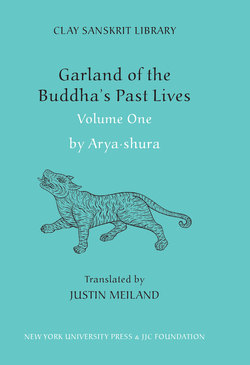Читать книгу Garland of the Buddha’s Past Lives (Volume 1) - Aryashura - Страница 10
На сайте Литреса книга снята с продажи.
ОглавлениеINTRODUCTION
The Jataka Genre
T
radition holds that when the Buddha became enlightened he acquired the ability to see his own past lives as well as those of others. This belief in the possibility of knowing previous rebirths opened the door to a whole genre of literature called jataka (literally “birthstory”), which was dedicated to depicting the past lives of the Buddha when he was still aspiring for enlightenment. It is in these vibrant portrayals of deeds performed by the future Buddha in a variety of different rebirths, including as animals, deities, ascetics, kings, brahmins, and others, that Buddhist narrative often becomes its most captivating. The “Garland of the Buddha’s Past Lives” (Jatakamala) by Arya·shura (Aryashura), translated here in two Clay Sanskrit Library volumes, is one of the most famous examples of this hugely popular genre.
The importance of jataka stories in traditional Buddhist culture cannot be overestimated. Not only in India but throughout Asia, jatakas have played a prominent role in Buddhist art, literature, ritual, and pedagogy and are still popular today in many Buddhist societies.1 Whether scattered throughout exegetical texts or gathered together in separate collections, jatakas pervade Buddhist literature in various manifestations, where they are frequently found in large numbers. Five hundred and forty seven jatakas make up a text called the Jatakatthavannana, just one of several collections in the Pali tradition, with some stories containing hundreds of verses, while Arya·shura’s “Garland of the ________
